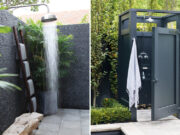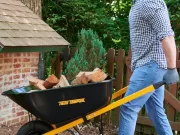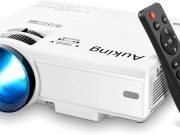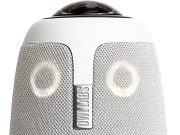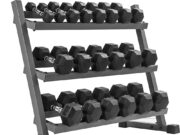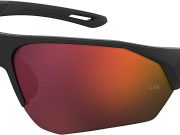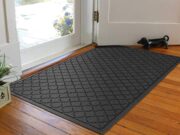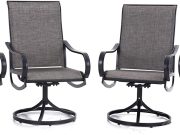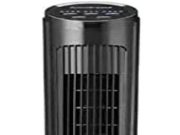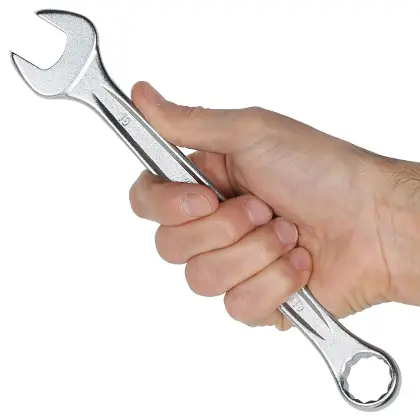You understand how crucial it is to have the appropriate tools for the task if you enjoy DIY projects, work as a mechanic, or are a plumber.
A wrench is one of the most important tools you need. The tool used to tighten or loosen nuts, bolts, screws, and other fasteners is called a wrench. But not every wrench is made equally. Certain wrenches work better in confined areas than others. Tight spaces include places like under a sink, behind a wall or behind an engine where you have little room to move your tool.
This post will analyse some of the top wrenches for confined spaces and assist you in selecting the right one for your requirements.

What to Look for in a Wrench for Tight Spaces
Let’s first talk about the qualities you should seek for in a good wrench for tight places before we get into the specific types of wrenches for tight spaces. Here are some of the things to think about:
1. Size and weight
The wrench’s size and weight affect how simple it is to handle and utilise in confined locations. You need a compact, lightweight, and ergonomic wrench. It might be difficult and tiresome to utilise a large or heavy wrench in confined locations.
2. Adjustability
A wrench’s ability to be adjusted affects how well it can fit fasteners of various sizes and shapes. A wrench that can adapt to different diameters and angles while maintaining its grip and torque is what you desire. You can save time and space by using an adjustable wrench instead of several wrenches.
3. Ratcheting mechanism
You may tighten or loosen screws using the wrench’s ratcheting mechanism without constantly removing and repositioning it. In confined situations where your mobility is restricted, this can help you save a lot of difficulty and annoyance. A ratcheting wrench can expedite your work by lowering the quantity of turns necessary to finish the job.
4. Quality and durability
The wrench’s quality and durability define how long it will last and how effectively it will function. A strong, corrosion-resistant wrench composed of steel or a chrome-vanadium alloy is what you desire. Additionally, you want a wrench with a precise and dependable operation, a cosy and non-slip handle, and a trustworthy warranty.
Top 5 Wrenches for Tight Spaces
We’ll look at some of the top choices on the market now that you know what to look for in a wrench for confined places. Based on consumer feedback, ratings, features, and performance, these are our top 5 recommendations.
1. TEKTON WRN53091 Ratcheting Combination Wrench Set
A versatile and superior set of 13 wrenches, the TEKTON WRN53091 Ratcheting Combination Wrench Set can tackle any fastening task in confined places. The set contains wrenches with sizes ranging from 1/4 inch to 1 inch, which covers the majority of fastener sizes. The fasteners have a hex form, and the wrenches have a 6-point box end that fits firmly and avoids slippage or rounding. Additionally, the box end contains a 72-tooth ratchet that can turn fasteners with just 5 degrees of swing arc, making it perfect for confined locations. To give your fingers and knuckles more room, the open end is 15 degrees inclined. The superior chrome-vanadium steel used to make the wrenches has been polished and hardened for strength. Additionally, they offer a stylish chrome-plated surface that is corrosion- and rust-resistant. A roll-up storage pouch that keeps the wrenches organised and portable is included with the set.
Pros:
- 13 versatile wrenches in one kit.
- 72-tooth ratchet with a 6-point box end
- 15 degree angled open end
- a high-quality chrome-vanadium steel
- Chrome platted finish
- Roll-up bag for storage
Cons:
- The ratchet mechanism has been criticised by certain users for being noisy or loose.
- The open end can slide off of some fasteners, according to some users’ reports.
2. GEARWRENCH 85988 12 Piece Ratcheting Wrench Set
Another great set of 12 ratcheting wrenches that can handle any fastening issue in confined areas is the GEARWRENCH 85988 12 Piece Ratcheting Wrench Set. The set contains wrenches with sizes ranging from 8 mm to 19 mm, which covers the majority of standard metric fastener sizes. The ratcheting box end of the wrenches has a proprietary off-corner loading design that lessens fastener rounding and boosts torque. Additionally, the box end incorporates a 5-degree ratcheting arc that enables you to turn fasteners in constrained locations with little movement. Surface Drive Plus technology that is built into the open end grabs fasteners on their flat surfaces rather than their corners to prevent rounding or slippage. Heat-treated alloy steel is used to create the wrenches, giving them strength and durability. Additionally, they have a shiny chrome finish that is corrosion- and rust-resistant. The wrenches are packaged in a moulded plastic container to keep them safe and organised.
Pros:
- Ratcheting box end with off-corner loading design that is patented
- Open end with Surface Drive Plus technology
- Alloy steel building
- gleaming chrome finish
- mould for a plastic enclosure
Cons:
- The case can be challenging to open or close, according to some users.
- Some customers complained that the ratchet mechanism could eventually wear out.
3. Crescent CX6PT20 X6 Pass-Through Ratchet and Sockets
Unusual and creative, the Crescent CX6PT20 X6 Pass-Through Ratchet and Sockets can manage any fastening circumstance in confined areas. In contrast to typical sockets, the tool comprises of a pass-through ratchet that may fit over lengthy bolts or threaded rods without bottoming out. Additionally, the ratchet includes an adjustable jaw that can grasp fasteners of any size or form, including hex, square, torx, and spline. Additionally, the ratchet incorporates a reversible mechanism that enables you to change directions with a quick lever flip. The tool includes 20 pass-through sockets that cover the majority of fastener sizes, ranging from 10 mm to 19 mm in metric sizes and from 3/8 inch to 3/4 inch in SAE sizes. For simple identification, the sockets have markings that were laser engraved. The tool also includes an adaptor that allows you to use it as a regular ratchet with normal sockets.
Pros:
- Pass-through ratchet that fits over long bolts or threaded rods
- adjustable jaw that can hold fasteners of any size or shape
- Reversible mechanism
- 20 sockets with pass-throughs and laser-etched markings
- Adapter for use with standard plugs
Cons:
- Some customers complained that the jaw could be difficult to lock or adjust.
- Some customers complained that the adapter could be flimsy or loose.
4. WORKPRO Offset Wrench Set
A straightforward yet useful set of four double-ended offset wrenches, the WORKPRO Offset Wrench Set can access hard-to-reach fasteners in confined locations. Two SAE sizes—3/8 inch by 7/16 inch and 1/2 inch by 9/16 inch—as well as two metric sizes—10 mm by 11 mm and 12 mm by 13 mm—are included in the set, which covers the majority of fastener sizes. With the offset design, you may reach fasteners at an angle without hindering the mobility of your hand or tool. For more clearance and leverage, the open ends are slanted at a 45 degree angle. For improved grip and torque, the box ends are slanted at a 15 degree angle. The drop-forged carbon steel used to make the wrenches has been heat-treated for strength and longevity. Additionally, they have a chrome-plated surface to fend off corrosion and rust.
Pros:
- Offset design for difficult-to-reach fasteners
- 45-degree angled open ends
- 15 degree angles on the box’s ends
- Drop-forged carbon steel construction with a chrome plating finishing
Cons:
- a small range of sizes
- The offset angle might sometimes be either shallow or too steep, according to some users.
5. MAXPOWER Stubby Adjustable Wrench Set
Three stubby adjustable wrenches that can fit into small spots where other wrenches cannot are included in the MAXPOWER Stubby Adjustable Wrench Set. Three sizes (4 inches, 6 inches, and 8 inches) are included in the package, which covers the majority of fastener sizes up to an inch in diameter. Because of the stubby shape, you can operate in small spaces with little headroom. With the help of the adjustable jaws, you may change the wrench’s breadth to accommodate various fastener sizes and shapes without sacrificing grip or torque. For simple measurement, the jaws additionally contain laser-etched markings. The handles have rubberized grips for comfort and control and an ergonomic design.
Pros:
- Stubby construction for small spaces
- Jaws can be adjusted and have laser-etched markings
- handles with rubberized grips that are ergonomic
Cons:
- The jaws can occasionally be loose or out of alignment, according to certain users.
- The rubbery grips can peel off or wear out, according to some customers.
Frequently Asked Questions about Wrenches for Tight Spaces
1. What distinguishes an open-end wrench from a box-end wrench?
A: A fastener head’s two opposing sides can be wrapped around an open-end wrench’s two U-shaped jaws at either end. A closed ring that fits completely around the fastener head is present at each end of a box-end wrench. An open-end wrench is simpler to slip on and off a fastener, but if used improperly, it can also slip or round off the fastening. Although it can be more difficult to set and remove a box-end wrench in confined spaces, it offers a more stable and firm hold on the fastener.
2. What distinguishes a ratcheting wrench from a regular wrench?
A standard wrench is one with a fixed jaw that does not move at either end. A wrench with movable jaws at one or both ends that can rotate in one direction but not the other is referred to as a ratcheting wrench. Every time you turn the fastener with a conventional wrench, you must remove it and replace it, which can be tedious and unpleasant in small areas. In small places, a ratcheting wrench can be used to spin the fastener without having to remove and reposition the wrench.
3. What distinguishes a metric wrench from an SAE wrench?
A SAE wrench is a type of wrench that is sized in inches and fractions of inches, such as 1/4 inch, 3/8 inch, and 1/2 inch, among others. A metric wrench is one that is sized in millimetres and decimal places of millimetres, like 10 mm, 12 mm, and 15 mm. While metric wrenches are more used in Europe and Asia, SAE wrenches are more prevalent in the US and Canada. Some fasteners can only be used with metric or SAE wrenches, while others can be used with either. You risk damaging the fastener or the wrench if you don’t use the proper size and kind of wrench for the fastener you’re working on.
4. A pass-through ratchet and socket is used in what way?
A pass-through ratchet and socket comprises of a socket with a hole in the middle and a ratchet handle. The socket may fit over long bolts or threaded rods without bottoming out thanks to the hole. Observe these steps to utilise a pass-through ratchet and socket:
- For the fastener you are working on, choose the appropriate size of socket.
- Put the socket through the hole at the end of the ratchet handle to attach it to the handle.
- Make sure the socket fits snugly over the fastener head before placing it there.
- You can tighten or loosen the fastener by turning the ratchet handle in that direction. The ratchet mechanism will engage with a clicking noise.
- Continue doing this until the fastener is completely tightened or loosened.
- Pulling the socket out of the hole will free it from the ratchet handle.
5. What is an adjustable wrench for?
A tool with a moveable jaw that can be adjusted to fit various fastener sizes and shapes is called an adjustable wrench. The steps for using an adjustable wrench are as follows:
- Choose an adjustable wrench that fits the fastener’s size that you are working on.
- By rotating the knurled wheel at the handle’s end, you may adjust the jaw’s breadth so that it fits the fastener head tightly.
- Make sure the jaw is tightly clamped and parallel to the sides of the fastening head.
- You can tighten or loosen the fastener by turning the handle in the desired direction. Avoid over- or under-tightening by applying uniform pressure.
- If necessary, change the jaw’s width to accommodate various fasteners.
The Bottom-line
Any DIYer, mechanic, or plumber who needs to work in confined locations requires a wrench. Not all wrenches, nevertheless, are appropriate for confined places. The wrench you select must be small, light, adjustable, ratcheting, strong, and well-made. The features you should look for in a decent wrench for tight areas have been discussed, along with reviews of some of the best wrenches available. Additionally, we have addressed some frequently asked issues and offered some advice on how to utilise various wrench types in confined locations.
We hope that this article has assisted you in identifying the ideal wrench for your requirements so that you can work in confined locations with comfort and assurance.
Happy hurting and thanks for reading!

